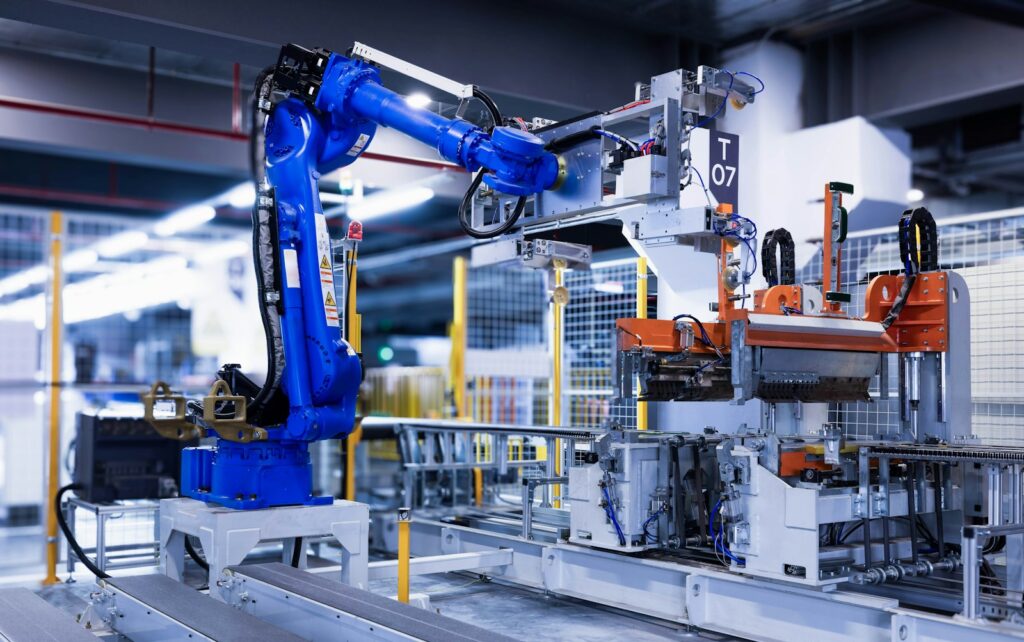Mark Tech – Ready to revolutionize your machine learning workflows in the cloud? Automating these processes can lead to unprecedented efficiency and scalability.
Follow these five essential steps to transform your approach to ML. Each step presents unique challenges, from choosing the right cloud platform to setting up effective monitoring systems.
By embracing automation, you set the foundation for a more powerful ML operation, unlocking new possibilities for innovation and growth.
Are you prepared to elevate your ML capabilities?
Key Takeaways
- Assess ML workflow to identify automation opportunities in data preprocessing, model training, and evaluation.
- Choose a cloud platform with robust ML services, automation capabilities, and scalable infrastructure.
- Set up an efficient data pipeline for ingestion, preprocessing, and versioning using cloud-native tools.
- Implement automated model training with hyperparameter tuning, version control, and performance tracking.
- Deploy models using containerization and establish monitoring systems for real-time performance tracking and retraining.
Assess Your ML Workflow

Begin by evaluating your current machine learning workflow to identify areas for automation. Look at each step in your process, from data collection and preprocessing to model training and deployment. Consider which tasks are repetitive, time-consuming, or prone to human error. These are prime candidates for automation.
Assess your data pipeline, focusing on data quality checks and preprocessing steps. Automating these processes can guarantee consistency and reduce the risk of errors.
Next, examine your model training procedures. Can you automate hyperparameter tuning or feature selection? Look for opportunities to parallelize computations and leverage cloud resources for faster training.
Don’t overlook model evaluation and monitoring. Automated testing suites can help you quickly assess model performance across various metrics. Set up automated alerts for model drift or performance degradation in production.
Choose the Right Cloud Platform

Your choice of cloud platform can greatly impact the efficiency and scalability of your automated ML workflows. When selecting a cloud provider, consider their specific offerings for machine learning and AI services. Compare the available tools, frameworks, and pre-built models that align with your project requirements.
Evaluate the cloud features that support automation, such as serverless computing, containerization, and orchestration services. These can markedly streamline your ML pipeline and reduce operational overhead. Look for platforms that offer robust APIs and SDKs to facilitate seamless integration with your existing systems and tools.
Consider the pricing models of different cloud providers. Some offer pay-as-you-go options, while others have committed-use discounts. Analyze your expected usage patterns and budget constraints to determine the most cost-effective solution for your needs.
Don’t forget to factor in potential costs for data storage, compute resources, and specialized ML services.
Assess the platform’s scalability and performance capabilities. Verify it can handle your current workload and accommodate future growth. Look for features like auto-scaling and distributed training to optimize resource utilization.
Additionally, consider the platform’s global reach if you need to deploy models across multiple regions.
Set Up Data Pipeline

Once you’ve chosen your cloud platform, setting up a robust data pipeline is crucial for automating your machine learning workflows. Start by identifying your data sources and establishing efficient data ingestion methods. This may involve connecting to databases, APIs, or streaming services to guarantee a continuous flow of fresh data into your pipeline.
Next, focus on data preprocessing and transformation. Implement steps to clean, normalize, and format your data for best model training. Consider using cloud-native tools for ETL (Extract, Transform, Load) processes to streamline these operations.
Incorporate pipeline orchestration to manage the flow of data through various stages of your workflow. This includes scheduling data updates, triggering model retraining, and managing dependencies between different components of your pipeline.
Utilize cloud services like Apache Airflow or native orchestration tools provided by your chosen platform to automate these processes.
Implement data versioning and tracking to maintain reproducibility and enable easy rollbacks if needed. Set up monitoring and logging systems to detect anomalies and guarantee the smooth operation of your pipeline.
Implement Automated Model Training

Automated model training forms the backbone of efficient machine learning workflows. You’ll want to implement a system that can handle various aspects of the training process without constant manual intervention.
Start by creating a framework that automates model selection based on your data and problem type. This should include a range of algorithms suitable for your specific use case.
Next, focus on automating hyperparameter tuning. Implement techniques like grid search, random search, or Bayesian optimization to find the best combination of parameters for each model. Set up a process that can run multiple experiments in parallel, saving time and resources.
Incorporate these elements into your automated training pipeline:
- A model zoo with pre-configured architectures
- A distributed computing system for scaling experiments
- Automated logging and versioning of model iterations
- Real-time performance tracking and early stopping mechanisms
Ensure your automated training system can handle different data types and sizes, adapting to changes in your input. Set up checkpoints to save progress and allow for easy resumption of training if interrupted.
Deploy and Monitor Models

The final piece of the automation puzzle involves deploying and monitoring your models. Once you’ve trained and validated your models, you’ll need to set up automated model deployment pipelines. These pipelines should seamlessly push your models into production environments, ensuring minimal downtime and consistent performance.
To automate model deployment, consider using containerization technologies like Docker and orchestration tools like Kubernetes. These allow you to package your models with all their dependencies and deploy them consistently across different environments. Implement rolling updates to minimize service interruptions when deploying new versions of your models.
Performance monitoring is essential for maintaining the effectiveness of your deployed models. Set up automated monitoring systems that track key metrics such as prediction accuracy, response times, and resource utilization.
Use tools like Prometheus and Grafana to create dashboards that provide real-time insights into your models’ performance. Implement automated alerts to notify you of any anomalies or performance degradation. This proactive approach allows you to address issues before they impact your users.
Additionally, set up periodic model retraining pipelines that automatically update your models with new data, ensuring they remain accurate and relevant over time.
Conclusion
You’ve now got the essential steps to automate your ML workflows in the cloud. By evaluating your current process, selecting the right platform, setting up efficient data pipelines, implementing automated training, and deploying with continuous monitoring, you’ll streamline your ML operations. Don’t hesitate to start applying these steps today. You’ll soon see improved efficiency, scalability, and performance in your machine learning projects. Embrace automation and watch your ML workflows thrive in the cloud.

